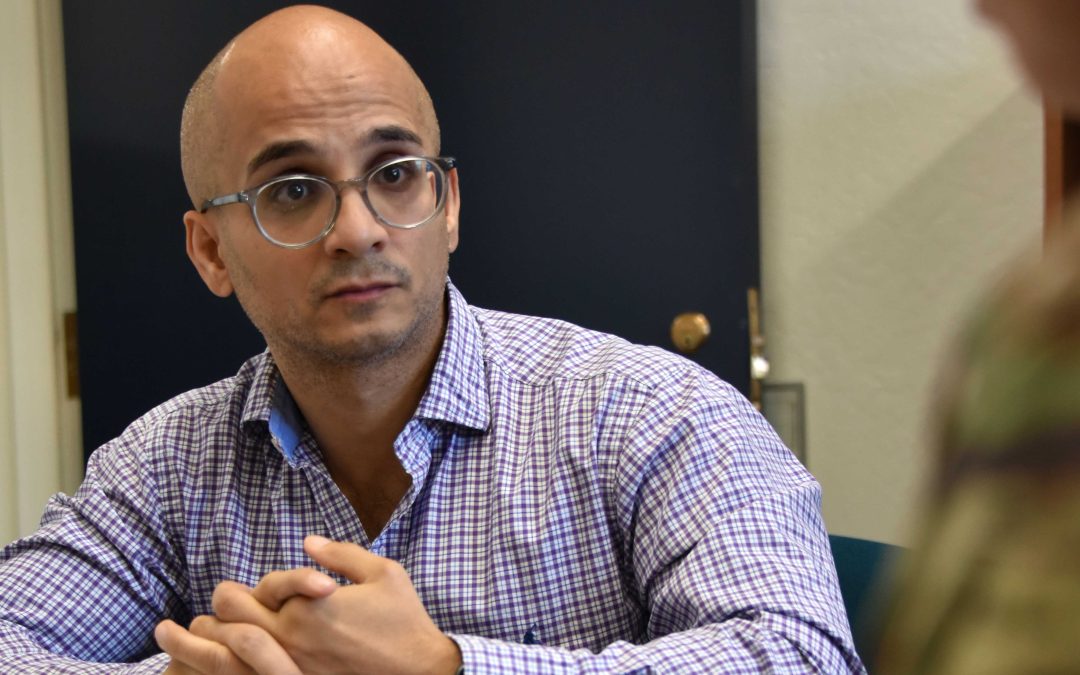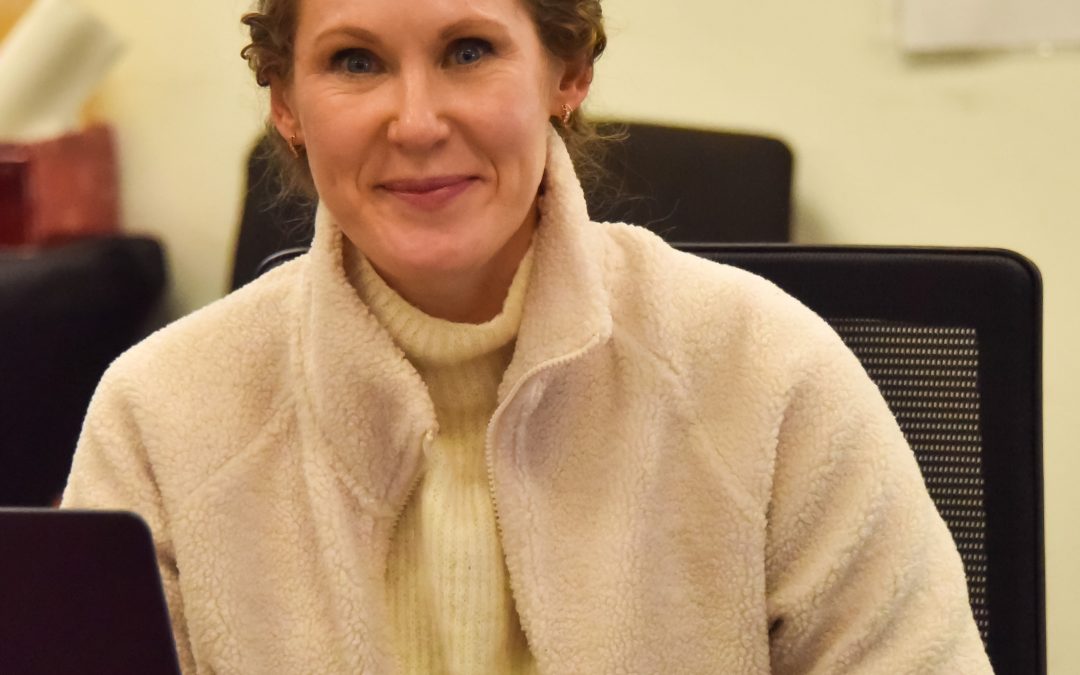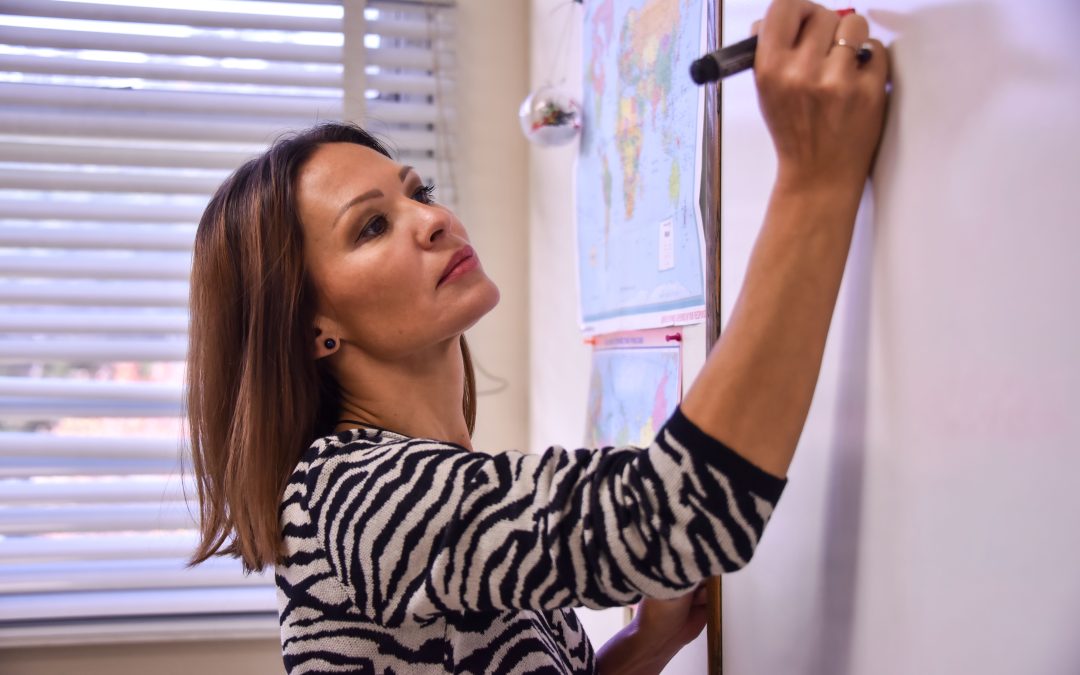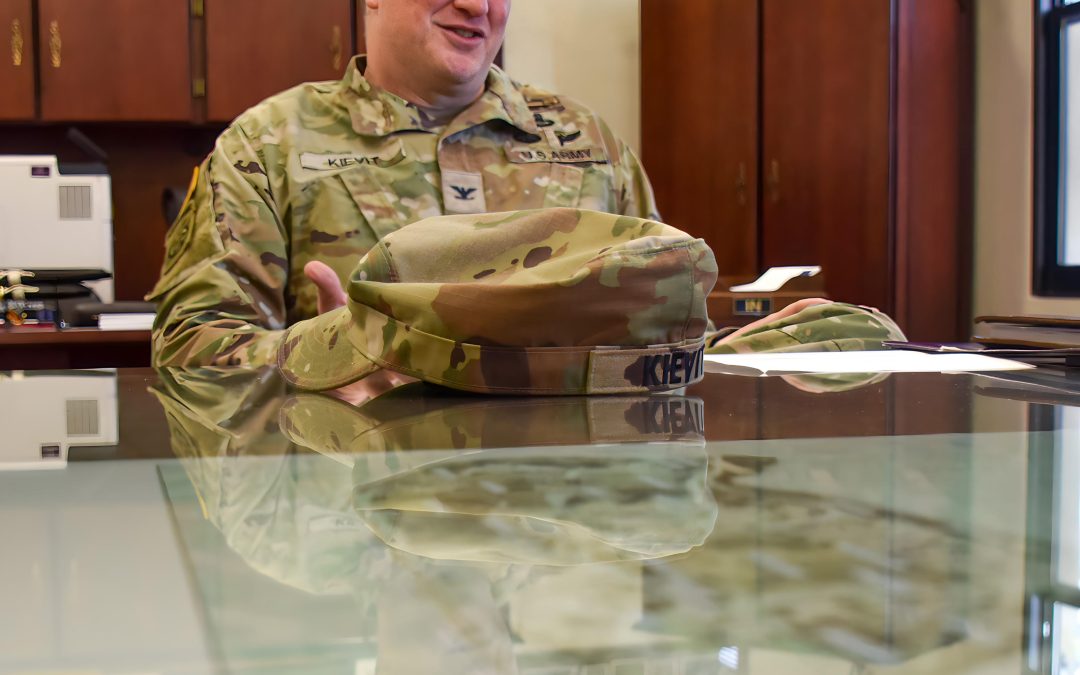By Tammy Cario
It all started a month ago when instructor Lucia Artacho and her team were brainstorming ways to engage their students in the Spanish classes that are now being taught online.
“Our main challenge during this COVID experience has been keeping our students engaged, motivated, and healthy, physically and mentally,” said Artacho. She asked her team of four instructors if a virtual trip to a Spanish-speaking country was possible.
“I said yes without knowing where to begin,” laughed Cynthia Cea Aguilar, one of the Spanish instructors on Artacho’s team at the Defense Language Institute Foreign Language Center, who is working from home.
The next day, while covering technology topics in Spanish, Aguilar’s decided to ask her students about video games.
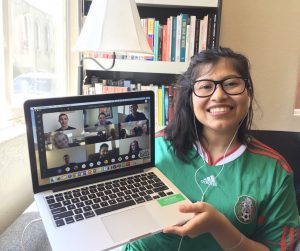
Cynthia Cea Aguilar, Spanish instructor at DLIFLC, proudly shows off a few of her students after a day spent on a virtual immersion in Mexico.
“Half of my class spends more than two hours on video games – a day,” Aguilar said. That was when it hit her – they could do a virtual immersion using an educational app.
Why an app?
The majority of the population in the U.S. has had a handheld video game in their lives since childhood. Although the first video game arrived on the scene in 1958, according to the Brookhaven National Laboratory, it wasn’t until 1976 that the first handheld device came out. Surprisingly, a survey done by Entertainment Software Association found that the majority of adult gamers use smartphones to play video games rather than a personal computer or a dedicated console. Which, if you think about it, makes sense. According to the Pew Research Center, 96% of Americans have cells phones, 81% of them being smartphones. Smartphone games are ubiquitous.
Despite growing up in a fairly tech savvy family, I am not what you would call a video game aficionado. I grew up content watching my siblings and cousins play video games, happy with games references sailing over my head. Fortunately, technology has not completely passed me by; I can usually fumble my way around smartphone apps and the occasional remote control.
An added wrinkle to Aguilar’s game, however, is that this virtual experience, designed by the instructors using a free online app, would truly be an immersion – done entirely in Spanish.
Fortunately, I had my co-worker, Leo Carrillo, who is bilingual with me on the other side of the video chat using the app, too. And I had a few hints from Aguilar about how to play the game.
“You’ll start at the Monterey Airport and fly to Mexico City,” she said. She explained that the game is all about triggers. It will ask you a question and you have to choose an answer. It’s similar to a role-playing game, or RPG, where your character goes on a journey through a series of structured decisions you have to make.
When she was brainstorming how to give the students an immersive experience, Aguilar researched different apps before she found one that was free for educational purposes, already built. All that was needed to build the game within the app was a little technological know-how. Well, and determination, something Aguilar has in spades.
“For the first four days, I was just stuck,” she said of her work on the app. “But I have taken some classes before, so I’m not scared of technology. And then I just kept pushing and pushing.” It wasn’t long before she got the hang of what she called, “the flow,” where she made the connections and everything clicked.
Three weeks and a lot of hard work later, I held my phone in my hand, waiting for Lucia Artacho’s teaching team to give the word that the virtual immersion tour to Mexico would begin. A trip I could take using only an app on my phone.
Gaming

A screenshot of a plane taking off from the Monterey Regional Airport as part of a virtual immersion tour that Cynthia Cea Aguilar and her team put together in an effort to engage their students while learning online.
The app started me off at my location, like I’m in Google Maps. I scrolled around to find the Monterey Regional Airport and clicked on the icon. The screen took me to the inside of the airport and a flight attendant told me what I could and could not bring on the flight. There was a small quiz asking me what she said – I guessed – and from there the airplane took off, with another in-flight quiz.
Even though I couldn’t understand the language, there was a certain kind of glee in being able to answer the quizzes, along with a sense of accomplishment when I moved on to the next decision. If this is the future of language learning, sign me up!
We arrived at the Mexico City International Airport, or rather, we had to scroll down the map to find Mexico City, where an airplane icon waited for us. Once we arrived, there were a series of things we would have to do in order to leave.

A screenshot of the video game map centered of the Mexico City International Airport, where several stops within the airport had to be completed before we could move on.
“It’s everything you would do in an airport,” said Aguilar. Among other things, you have to exchange money, take transportation and go through a COVID-19 screening. Essentially, all the things you would normally have to do if you flew into an airport in a foreign country. And, in the theme of a game, each stop would net you a certain amount of money to spend.
Each icon was an opportunity for the students to practice different parts of their Spanish. For instance, the COVID-19 stop, where Artacho pretended to be a doctor on the video chat, had the students interacting with their lead instructor about their symptoms and previous travel.
Another icon on the airport map was a cell phone store. The instructions in the app sent us to a virtual video chat room where Luis Ortega, one of the Spanish teachers, played a salesman. After going through the phone plans in Spanish, he told us, “This is all authentic material,” meaning they had to go do research about cell phone stores in the Mexico City airport. And that was just one of over 50 stops Aguilar had programmed into the game.
Back to the app, Carrillo and I chose phone plans using the money we had earned along the way and it triggered the end of that stop. On to the next until all the stops at the airport had been completed.
Once the students finished with the airport, which took most of the morning, they moved on to Zocalo, a charming city where they had many other icons to visit. They learned history and culture, as well as interacting with civilians and other tourists (the instructors doing more role playing). It was a way for the students to expand their vocabulary in real situations, or as real as it could be in a virtual world.
More than that, it was engaging.
The students gave their feedback at the end of the day, a crowd of enthusiastic laughs and retelling of their experiences.
For Aguilar, it was euphoric. “I am so overwhelmed with the great response of our students,” she said. “Today we connected with our students on a different level; we learned, we laughed, we danced and we thrived together.”
In Artacho’s words, it was summed up this way, “Just seeing them willing to be playful IN SPANISH, regardless of their level, is in my heart an absolute success.”

